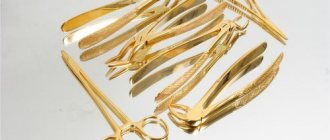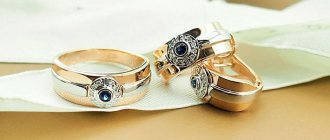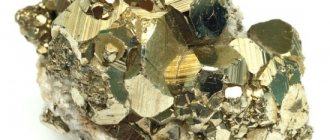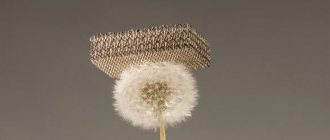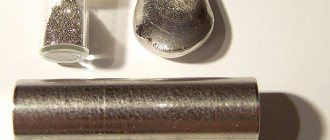The term “precious metals” itself implies substances that have a much higher value compared to other materials. Their value is primarily due to their special chemical characteristics: these substances are resistant to corrosion and destruction, and retain their appearance for a long time. In addition, nature has very few reserves of precious metals, and their extraction is sometimes extremely difficult. There are eight types of noble metals, each of which has found application in its own field.
Known noble metals
Noble metals are gold, silver and platinum, which are known to us mainly from the jewelry industry. They have several derivatives (rhodium, iridium, palladium, ruthenium, osmium), which can also be classified in this category. However, there is no consensus among scientists about the completeness of this list. Thus, a number of researchers believe that technetium also complements noble metals. Its peculiarity lies in its radioactivity.
Jewels have gained this status due to the fact that they are practically not susceptible to corrosion, as well as to the influence of most chemical elements. For jewelry, not only shine and shimmer are important, but also the fact that precious metals practically do not enter into any reactions with the human body, and therefore do not lose their properties over time and do not lead to inflammation and allergic reactions. Their cost also increases due to the fact that they are quite rare in nature.
Rhodium
This element has a bluish tint. Like argentum, it is reflective, and rhodium is particularly hard and brittle. Otherwise, all its qualities coincide with the properties described above, characteristic of all noble metals. Rhodium is slightly denser than palladium - twelve point one and forty-four hundredths of a gram per cubic centimeter. As for the melting and hardening temperature, this element softens at a temperature of 1966 ° C (even more than platinum!), and takes a solid form at 6 Mohs. The physical and chemical properties of rhodium allow it to be used to coat silver and gold items.
Characteristics of platinum and its derivatives
The group of noble metals is characterized by increased strength, electrical and thermal conductivity, and resistance to destruction. However, each of them also has some features that give them special value. So, speaking of rhodium, it is worth noting its silver-blue hue. Despite the fact that it is quite resistant to chemical reactions, mechanical influences have a destructive effect on it. However, it is the most expensive metal on the planet, and its price can exceed $200 per gram.

The second most valuable gold metal is platinum. Its price is 30-40 dollars per gram. Neither air nor any aggressive chemicals can oxidize this substance. Since platinum is extremely rare in natural conditions, it is combined with other metals.
Osmium is the heaviest of all known precious metals. Its color is close to white with a barely noticeable silver tint. It is worth noting that it cannot be obtained in nature in its pure form. As a result, the cost of the metal increases significantly, and therefore it is used quite rarely (only in specific industries). The advantage of osmium can be considered hardness and refractoriness, but mechanical effects can be destructive for it.
Iridium is very similar in appearance to the previous metal, and it is also rare in nature. Its characteristics are similar to osmium, but with one serious caveat. Iridium belongs to the category of heavy metals that pose a danger to human health.
Rare and noble metals are crowned with ruthenium. As you already understand, any of the representatives of the platinum group is quite difficult to find in nature, and the possibility of encountering this element is also negligible. That is why it is practically not used in industry, and especially in jewelry production. Its purpose is to act as a catalyst in a number of chemical reactions.
Palladium is distinguished by its lightness, which is not inherent in any other precious metal. It is mined in places where copper and nickel ores accumulate. This substance is considered the cheapest of its group. But in terms of characteristics such as fusibility and strength, it is in no way inferior to other metals.
Production
How are precious metals mined? There is a whole technology for this. First of all, you need to know that precious metals are found both in pure form, as nuggets, and with various impurities. It is not difficult to collect nuggets - they are usually scattered on the ground, all you have to do is bend down and collect. If they are carried away by water, this also happens; another method comes into play: washing. Since precious metals are heavier than sand, which is washed away with water, it is not difficult to extract the precious placers remaining at the bottom of the container where the process took place.
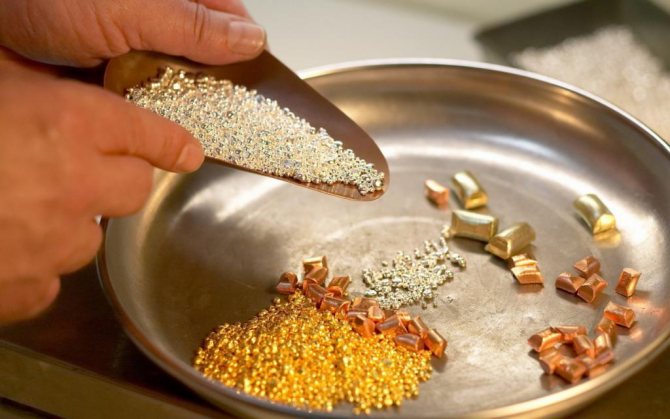
Precious metals are found in ore with impurities. Removing them from there is the most costly and difficult. The ore itself is located at a fairly great depth, so the first difficulty is to pull it to the surface. And only then, from the composition of the ore (which, in addition to noble metals, contains all sorts of impurities), it is necessary to extract the desired one. This process occurs both chemically and mechanically.
Characteristics of gold
Such a noble metal as gold is most often used in jewelry. The first thing that catches your eye is the incredible shine and warm yellowish tint that distinguishes jewelry made from aurum. In terms of effectiveness, gold can only be surpassed by platinum. Its price is many times higher, and therefore the yellow metal remains the leader on the market.
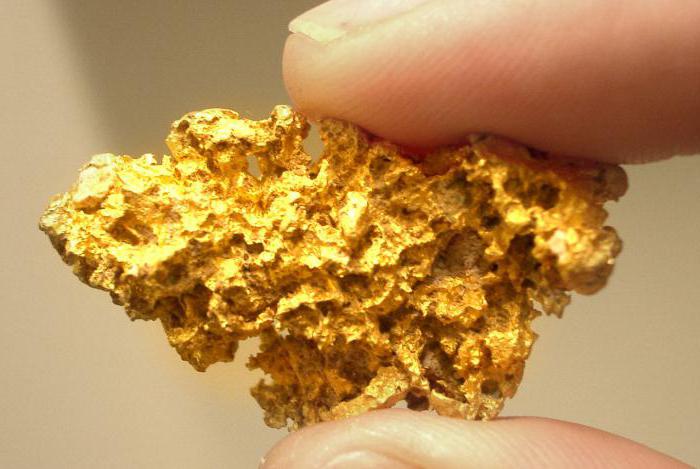
If we talk about the characteristics of gold, it is worth noting that it is an excellent thermal and electrical conductor. As for the chemical stability of this metal, we note that it does not have outstanding performance, and therefore is not used very often in industry. And since gold is viscous and malleable, and even has a lot of weight, jewelry is an ideal application for it.
Interesting and surprising
- It is believed that aurum is such a rare element that it is possible to find more iron in sixty minutes than a given yellow metal has been found in the entire history of its mining. Meanwhile, this is more than one hundred and sixty thousand tons! The most remarkable thing, by the way, is that the vast majority of this amount was discovered in South Africa.
- Gold can be dissolved in a combination of nitric and hydrochloric acids. This “union” is called “royal vodka”.
- The word "silver", just like its British and German synonyms, comes from the ancient Indian word "sarpa", the meaning of which is the moon and the sickle.
- At the end of the twenties of the nineteenth century in Russia, platinum was two times cheaper than silver (now it is about a hundred times more expensive).
- The largest silver nugget weighed almost one and a half thousand kilograms.
- The ancient Egyptians believed that gold was divine particles. The pharaoh had the exclusive right to own them.
- Previously, Olympic medals were made of pure gold (at the beginning of the twentieth century), but now they are only coated with this noble metal - no more than six grams per medal (and in the medals awarded at the 2012 Olympics in London, the gold content does not exceed one percent ).
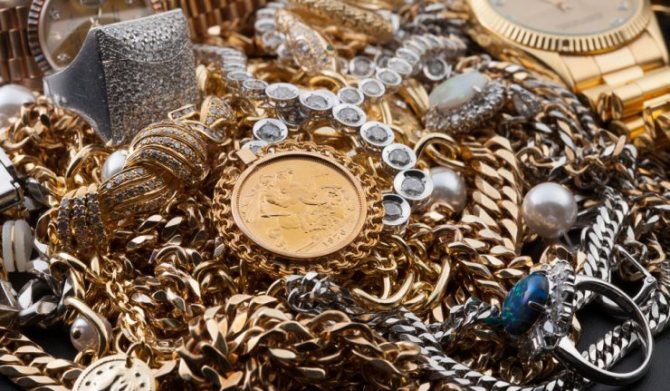
- Our country is a world leader in the extraction and supply of one of the platinum group metals – palladium.
- Silver in its pure form is found less frequently than gold. Nevertheless, throughout the entire globe there is much less gold than its silver “colleague”.
- In its pure form, gold is very soft. So much so that it can be easily and effortlessly scratched even with fingernails.
Now light has been shed on the question of which metals are noble, and it is clear for what properties and for what reason they are called so.
Characteristics of silver
Silver can be considered the most common. The metal is quite common in nature, and therefore its cost in comparison with other noble “brothers” is quite low. The structure of silver is very soft and flexible, it conducts heat and electricity well. It is also worth noting the active participation of Ag in all kinds of chemical reactions.
In jewelry, silver ranks second after gold. Metal provides enormous opportunities for creating the most intricate artistic forms, and the cost of such products is very affordable. In addition, craftsmen often disguise silver as gold or platinum using special sputtering. Nevertheless, the experienced eye of an expert will immediately notice the substitution, which cannot be said about ordinary people, who will be able to obtain exquisite jewelry at an affordable price.
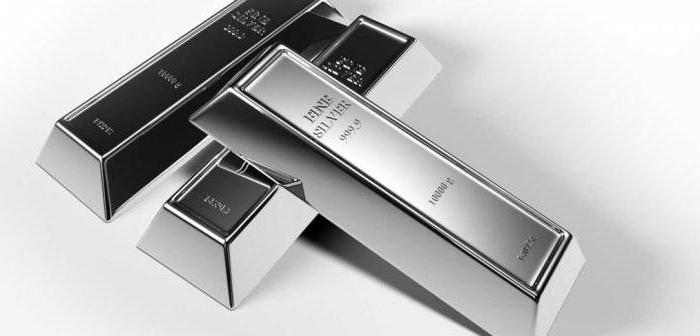
Precious metals in economics
Noble and precious metals have served as a means of payment since ancient times. Money was even made from them, but later this practice became obsolete. Nevertheless, in the modern financial system these materials continue to play a leading role. It is a powerful financial instrument that is the basis of the economy. This state of affairs is explained by several factors:
- Gold and silver were the first world currencies that made it possible to carry out commodity-money relations. The value of the very first coins did not depend on where and by whom they were minted. The main role was played by the quality of the metal, as well as its weight parameters, which determined the value of the currency.
- Even at a time when silver coins have long sunk into oblivion, this and other metals are still considered the basis of the state's prosperity. The amount of cash is strictly regulated by the amount of gold in reserve. The metal is also an excellent investment as it constantly increases in value.
However, precious metals have such an undeniable disadvantage as the ability to wear out over the years, albeit slightly. But traders found a way out here too. Trading does not take place using real metal bars, but through the sale of special securities.
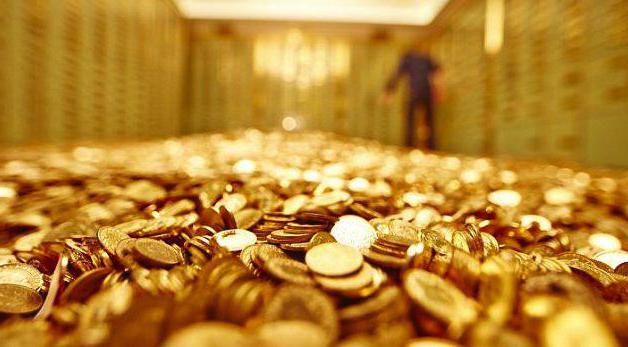
Platinum
First of all, it should be said that all platinum metals are divided into two groups: light (these are rhodium, ruthenium and palladium - the most weightless of the so-called platinoids) and heavy (platinum itself, osmium and iridium). And here platinum can compete with gold for the right to be called a heavy metal: its density is 21.5 grams per cubic centimeter (remember, gold has a little over nineteen). Now about each metal in a little more detail.
Platinum is a precious noble metal of white shiny color, which has all the brightest features of this category. As mentioned earlier, this metal is harder than gold and silver; moreover, its melting point is higher - as much as 1773.5 degrees Celsius. Platinum needs a Mohs of 4.5 to harden.
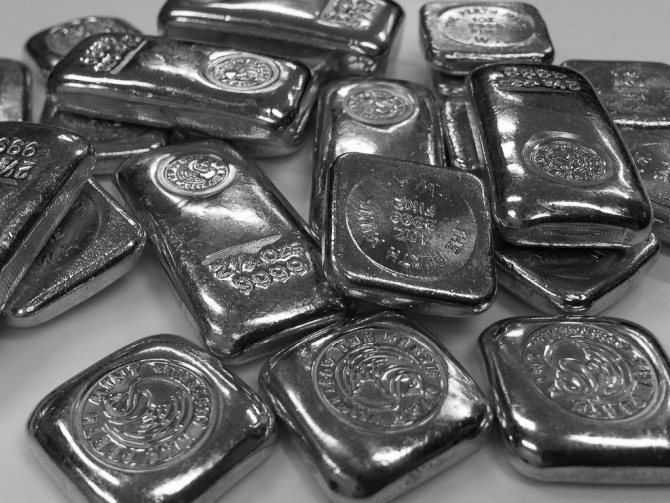
It was also mentioned earlier that before the eighteenth century, platinum was not particularly valued. This is true - only in 1751 it was included in the list of noble metals. And after the discovery of other platinum group metals, it unexpectedly ascended so that it became more expensive than gold, a demonstration of luxury and chic.
Application of noble metals
One of the most important functions of noble metals is economic, since they have served as money for a long time. Despite the fact that today they only serve as security for the state treasury, this does not mean that gold and platinum have lost their relevance. They find their application in many industries.
Alloys of noble metals are acquiring a huge role in such areas as electrical engineering. Since all of them are excellent conductors of current, the smallest parts for microcircuit contacts are made from such substances. When it comes to low stress levels, such metals and their alloys show high strength.
Since precious metals are characterized by resistance to chemical influences, they are widely used in the production of laboratory devices and equipment. They have also found their application in mechanical engineering related to the mining industry. Gold, silver and platinum are used to make those parts of units that come into direct contact with certain chemicals. These can be heating, measuring and other elements. Also, metals of noble origin are often used in the manufacture of high-strength glassware for laboratory research.
Precious metals are widely used in medicine. For example, silver, due to its bactericidal properties, is often included in alloys for the production of surgical supplies. Also, a small amount of this metal is present in the X-ray film.
Thus, as you may have noticed, the jewelry industry is far from the limit of the use of precious metals. Almost every electrical device contains a small amount of one or another precious substance. Also, if you want to protect yourself from germs, make it a habit to use silver cutlery.
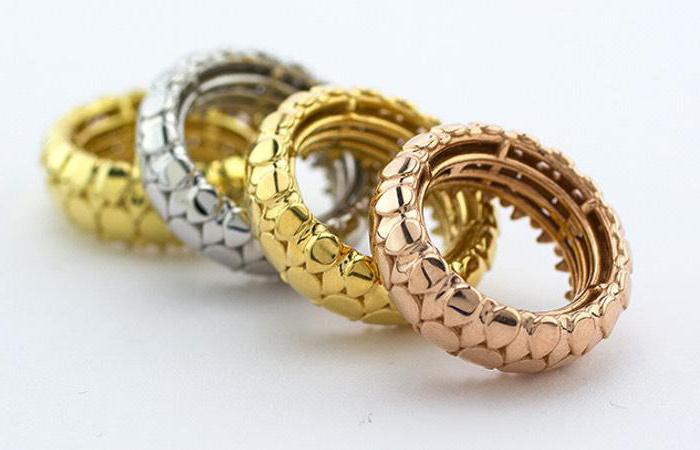
Iridium
The color of this metal is grayish-white. The properties of iridium are exactly the same as those of rhodium or ruthenium, and the density is 22.41, which even exceeds the density of platinum itself. The melting point of iridium is slightly higher than that of ruthenium, and is 2454 ° C. Iridium is the most resistant metal to chemical influences: it is not susceptible to damage from acids, salts, or any other chemical elements. The properties of iridium make it possible to successfully use it in watch production.
How the cost of precious metals is formed
All types of noble metals are distinguished by the fact that their reserves in nature are extremely limited. In addition, compared to other substances, they are quite expensive. When determining the price of precious metals, a number of factors must be taken into account:
- Supply and demand in the market. In accordance with economic laws, the higher the demand for a particular product (in this case, a precious metal), the more its price will increase. If we talk about the proposal, then it acts in the diametrically opposite way. So, if metal production increases sharply, its value will immediately collapse.
- State funds. Since almost all countries use precious metals as a reserve, they can regulate the market situation in a certain way. Thus, by putting up part of its reserves for auction (intentionally or forcedly), the government will contribute to a sharp reduction in the price of this product. If a decision is made to replenish reserves, the opposite situation will arise.
- Method and scale of production. It is worth noting that the cost of precious metals largely depends on how and in what place it is mined. So, if we talk about third world countries, where labor is very cheap, then the cost of raw materials will be simply insignificant compared to the price that the final buyer will pay.
Precious metal alloys
The characteristic features of noble metals are malleability and ductility. Sometimes these characteristics are so pronounced that the use of a particular substance in its pure form becomes impossible. Then production resorts to creating alloys. Auxiliary substances are selected in accordance with which noble metals are used as a basis.
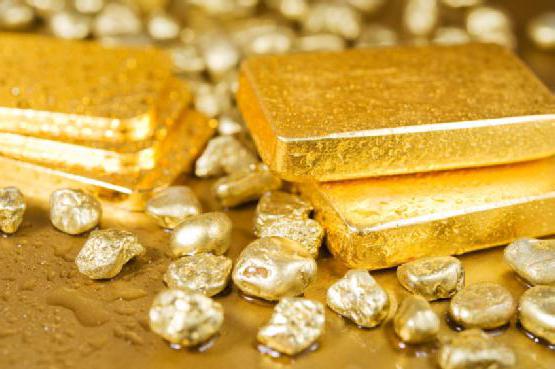
Speaking about gold, it is worth noting that it is almost always used in the form of an alloy. However, when it comes to jewelry, the possibilities in the field of impurities are very limited. So, if we are talking about creating jewelry, then gold can be melted with silver, copper or platinum and palladium.
Even a material as inexpensive and easy to use as silver also requires some foreign substances to ensure higher quality products. This component is most often copper. Moreover, the more precise and refined the work, the fewer impurities are introduced into the base.
Since platinum is a fairly rare metal, certain impurities are often added to it. And even the most expensive products cannot do without foreign substances. Thus, a number of additional elements are required when it is necessary to ensure the strength of fastenings or settings of precious stones. If we talk about platinum derivatives, they themselves can act as additional impurities that ensure the strength of some elements of jewelry.
Story
They received the name “noble metals” due to their high chemical resistance (they practically do not oxidize in air) and the luster of their products. Gold, silver, pure platinum and palladium have high ductility, and other noble metals also have very high refractoriness.
Ancient times
Native gold and silver have been known to mankind for several millennia; This is evidenced by products found in ancient burials and primitive mine workings that have survived to this day. In ancient times, the main centers for the extraction of precious metals were Upper Egypt, Nubia, Spain, Colchis (Caucasus); There is information about production in Central and South America and Asia (India, Altai, Kazakhstan, China). In Russia, gold was mined already in the 2nd-3rd millennium BC. e. Metals were extracted from placers by washing sand on the skins of animals with trimmed hair (to catch grains of gold), as well as using primitive gutters, trays and ladles. Metals were extracted from ores by heating the rock until it cracked, followed by crushing the blocks in stone mortars, grinding with millstones, and washing. Separation by size was carried out on sieves. In Ancient Egypt, there was a known method of separating gold and silver alloys with acids, separating gold and silver from a lead alloy by cupellation, extracting gold by amalgamation with mercury, or collecting particles using a fatty surface (Ancient Greece). Cupellation was carried out in clay crucibles, to which lead, table salt, and tin were added [ source not specified 233 days
] and bran.
In -VI centuries BC. e. silver was mined in Spain in the valleys of the Tagus, Duero, Minho and Guadyaro rivers. In -IV centuries BC. e. The development of primary and placer gold deposits began in Transylvania and the Western Carpathians.
Mining in the Middle Ages
In the Middle Ages (until the 18th century), mainly silver was mined; gold production decreased due to the depletion of available deposits. Since the 16th century, the Spaniards began developing precious metals in South America: from 1532 - in Peru and Chile, and from 1537 - in New Granada (modern Colombia). In Bolivia, the development of the “silver mountain” of Potosi began in 1545. In 1577, gold deposits were discovered in Brazil. By the middle of the 16th century, gold and silver were mined in America 5 times more than in Europe before the discovery of the New World.
Discovery of platinum
In the first half of the 16th century, Spanish colonialists drew attention to the infusible heavy white metal, which was found along with gold in the placers of New Granada. Based on its external resemblance to silver (Spanish: plata
) they gave it the diminutive name “platinum” (Spanish
platina
), literally “silver”.
Platinum was known in ancient times; nuggets of this metal were found together with gold and were called “white gold” (Ancient Egypt, Spain, Abyssinia), “frog gold” (Borneo island). Due to the fact that platinum was used for fraud (substituting gold in coins and jewelry), it was published by [ who?
] government decree ordering it to be thrown into the sea [
source not specified 1952 days
]. The first scientific description of platinum was made by William Watson in 1741 in connection with the beginning of its mining on an industrial scale in Columbia (1735).
Discovery of palladium, rhodium, iridium, osmium and ruthenium
In 1803, the English scientist William Wollaston discovered palladium and rhodium, and in 1804, the English scientist S. Tennant discovered iridium and osmium. In 1808, the Polish scientist Andrzej Sniadecki, while studying platinum ore from South America, extracted a new chemical element, which he called vestium.
. In 1844, Kazan University professor Karl Klaus comprehensively studied this element and named it ruthenium in honor of Rus'.
Processing of precious metals
While admiring beautiful jewelry, few people think about what procedures the metal went through to turn into an elegant thing. There are a number of techniques and methods by which precious substances are processed:
- forging - involves stretching and shaping metal using special tools;
- casting - involves the manufacture of certain products by filling molds with molten raw materials;
- carving - involves removing part of the metal from the surface of the product to create a pattern or relief;
- embossing is the process of giving metal three-dimensional shapes by striking it with a hard object;
- basma - an image of certain motifs or patterns on an ultra-thin sheet of one or another precious metal;
- filigree - is a pattern formed by soldering thin wire onto a base sheet;
- solder - used to firmly connect individual elements of the product to each other (an important feature of this technique is that the joints are completely invisible);
- niello - giving individual elements of a product a darker shade by combining the base with an alloy of silver, sulfur, copper and lead, which has a pronounced dark shade;
- enamel - coating of the elements of a substance with a colored composition, its liquid structure reminiscent of glass (the enamel acquires strength and opacity after treatment at high temperatures).
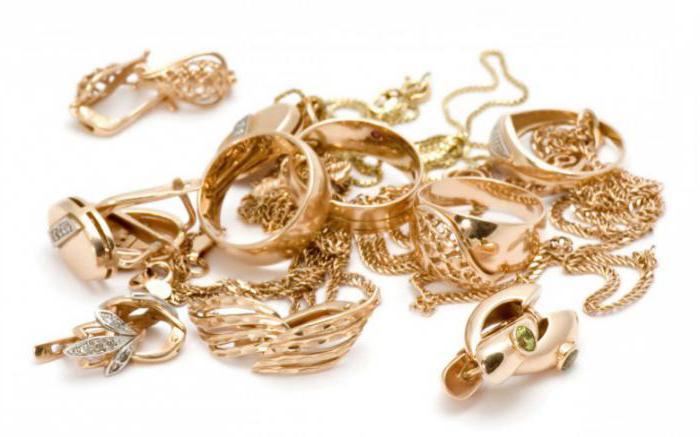
Modern processing technologies
There are two ways to process precious metals.
Casting
This method is relatively simple. Indeed, all that is required is to pour the molten metal into a pre-prepared mold made of copper, lead, wood or wax. After complete cooling, the product is removed from the mold and polished.
Special melting furnaces are used to soften the metal. They are induction and muffle.
The induction furnace is considered the most popular and functional type of melting. In it, heating occurs due to the influence of eddy currents. A muffle furnace allows you to heat certain materials to a specified temperature.
Muffle furnaces are divided into different types depending on the type of heating element (electric, gas), on the protective processing mode (air, with a gas atmosphere, vacuum), on the type of design (vertical loading, bell-type, horizontal loading, tubular).
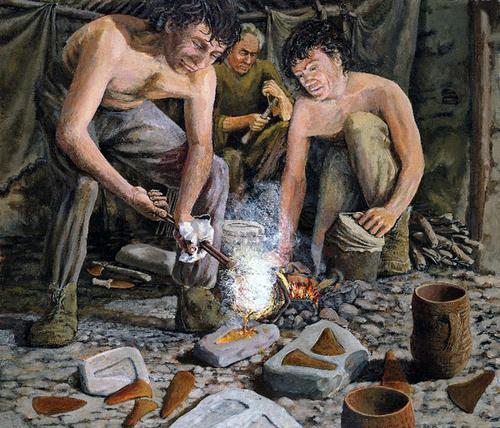
Coinage
This method is considered more complex. Here the metal is not melted, but heated to the state necessary for further work. Next, using hammers, the softened raw material is turned into a thin layer on a lead substrate. Next, the future product is given the required shape.

How are precious metals mined?
Gold was one of the first metals that man discovered. Historians say that when ancient people found nuggets, they simply made holes in them and wore them around their necks. And since the metal was quite pure, it could easily be given absolutely any shape. Later they began to search for gold purposefully, sifting sand in rivers.
Now it is mined in a completely different way. Gold is extracted from underground deposits. To begin with, the ore is treated with special substances to obtain a solution. Next, it undergoes a filtration procedure, as a result of which the gold is separated from foreign impurities. Mercury can also be used to separate metal from other substances. Next, the gold is sent to refineries, where it is completely purified.
Despite the fact that silver is a relatively cheap material, its nuggets are practically never found in nature. That is why it became known to mankind several centuries later. Underground ore contains only 20% impurities. However, silver is not mined deliberately. It can be considered a by-product of copper and lead processing. Like gold, Ag is also refined in refineries.
Precious metals should not be underestimated, relegating their scope of application only to jewelry. In fact, their use spans many industries where strength and precision are required.
Argentum
The noble metal silver has a white color. All of the above-mentioned properties of metals of this group are characteristic of it in full, in addition, silver has remarkable reflectivity. Silver is lighter than gold, its density is only ten and a half; however, gold is one of the heaviest and densest metals.
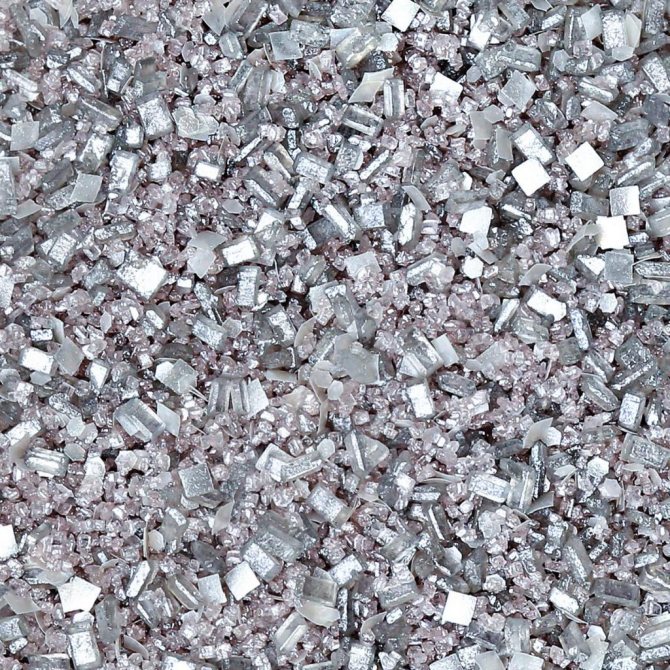
Unlike the latter, it cannot be said about silver that it does not react to any acids: it does not react only with hydrofluoric and hydrochloric acid. However, like gold, this noble metal is resistant to moisture, and its melting point is not much lower: nine hundred and sixty and a half degrees (hardening temperature is three according to Mohs). Another distinctive feature of silver is its ability to darken under the influence of hydrogen sulfide (it is found in the air).

